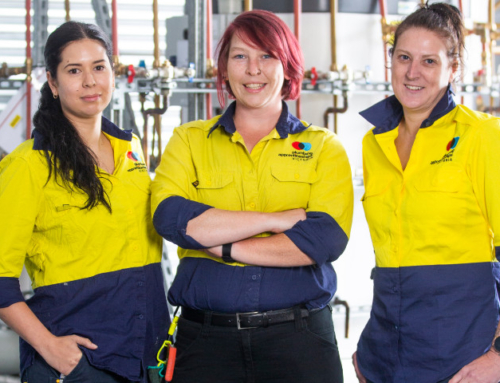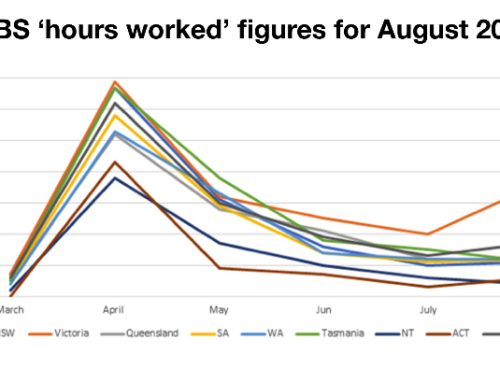By Dr Kathleen Hurley
Director, Research
THE Victorian Department of Treasury and Finance (DTF) released the 2021-22 Budget Update on Friday 10 December.
While the initial discussion accentuated the positive and made much of an expected strong recovery, it also noted the impact of the Delta variant in the latter half of 2021. To substantiate this, DTF points to a strong recovery overall this year after the low watermark of September 2020, and reminds us that the effects of the Delta variant were not as pronounced as the first iteration of the COVID emergency back in 2020.
Of course, Omicron is now upon us and the various references in the budget update to ‘emerging variant strains’ and ‘outbreaks’ seem prescient. This statement under the ‘risks’ section sums things up pretty well:
“Risks to Victoria’s economic outlook remain greater than normal and the forecasts are subject to a high degree of uncertainty. These risks continue to be dominated by the COVID-19 pandemic, including risks around the efficacy of vaccines on emerging strains of COVID-19, and potential changes to policy responses as the domestic and global economies recover.” (p.18)
2021-22 revised budget position
As a result of Delta outbreak and the need for extra financial assistance from government, the anticipated ‘net result’ (otherwise known as the surplus or the deficit) for 2021-22 Budget has been revised down by $7.9 billion from when it was announced back in May 2021, now dropping to an expected deficit of $19.4 billion.
Over the forward estimates they expect the net result to keep creeping back up – to a $5.3 billion deficit in 2022-23, a $3.4 billion deficit by 2023-24 and a 2.1 billion deficit by 2024-25.
Revenue and grants outlook
Overall the budget position is currently well placed due to the resurgent property market, which means the State government’s coffers are filling up with stamp duty revenue.
Land transfer revenue (e.g. stamp duty) has now been revised upwards from the initial budget handed down in May to increase by 19.2 per cent to reach $7.7 billion in 2021-22.
Land taxes are also expected to increase as the relief measures implemented in the wake of the COVID emergency begin to taper off, and payroll taxes are subdued for the remainder of this financial year due to COVID relief measures implemented to assist businesses.
The fall in employment will also have had a big impact on this revenue stream (e.g. if people aren’t working they are not on the payroll, which equals less payroll tax). Gambling revenue is also forecast to be down this financial year but is expected to improve across the forward estimates.
In terms of grants from the Commonwealth government, these increased considerably over this financial year as the Commonwealth kicked in with COVID assistance packages, mainly to businesses.
More worrisome though is that the grants received via the GST share are set to decline by a further 2.2 per cent in 2021-22 following a 17.4 per cent increase in 2020-21. As most of the eastern seaboard was in lockdown over August-October this year, there has been less consumer spending at the national level, and this equates to a smaller GST pool from which to distribute the revenue to the states.
A further issue for Victoria is the fall in population we have experienced over the last 18 months. This will impact the Victorian share of future GST as well.
Infrastructure initiatives and impact on net debt
The Victorian Government is pressing on with the Big Build suite of infrastructure programs and the Suburban Rail Loop, and when the costs of the COVID response over the past 18 months are added into the mix, the levels of debt Victoria is now achieving are eye-watering.
Net debt is set to increase to $104.5 billion at June 2022 and to $162.7 billion by June 2025. That equates to 21.1 per cent of Gross State Product (GSP) for 2021-22 and to 27.9 per cent by the end of the forward estimates in 2024-25.
The Government had always planned a big increase in debt prior to COVID to cover the cost of the infrastructure build, but a mere three years ago people would quibble over whether net debt was 5 or 6 per cent of GSP.
The extra transport initiatives announced in the Budget Update include $2.5 billion across the forward estimates for the ‘85 by 2025’ initiative – 10 additional level crossing removals – however this money is not allocated (just ‘TBC’ under each year of the forward estimates) over the years. These level crossings removals are comprised of a selection of outer eastern, south eastern and bayside Melbourne locations.
Other interesting things
The government expects to raise just over $300 million in the new mental health levy this financial year, rising to over $800 million by the end of the forward estimates in 2024-25.
There is an interesting list of contingent liabilities way down the back which includes a number of pending class actions against the government for lockdowns by businesses, residents, public housing tenants and Department of Transport contractors. The papers note the VMIA is on notice to cover these costs if the law suits don’t go the government’s way.
They are also readying themselves for compensation payouts from Victoria Police arising from the Royal Commission into the Management of Police Informants.
New COVID recovery output and infrastructure initiatives
In terms of new output and infrastructure initiatives, there are a slew of new initiatives across the education, housing, fairness, industry and health departments that can be classified as ‘essential post-COVID recovery’, including upgrading ventilation systems across schools, more funding for better school cleaning services and providing mental health and educational catch up support to students.
The Department of Families, Fairness and Housing also had a number of programs for post-COVID support for women, people at risk of homelessness, family violence, carers and CALD communities.
The Department of Jobs, Precincts and Regions had a number of initiatives for COVID affected industries, supporting the arts, live music, sporting clubs, the events/exhibitions sector and international education.
The Health department put aside and extra $1.9 billion for “COVID-19 Capability and Response” which seemed to cover everything from extra surge capacity for hospitals to vaccine rollouts.
There was also allocated funding across the departments from the June 2021 flood and storm response.
Overall this section of the Budget Update shows how much ongoing support is needed to assist the community in ‘recovering’ from COVID outbreaks. The introduction of the mental health levy appears particularly prescient in light of the amount of community support needed.
Gender Equity and Gender Responsive Budgeting
Finally, the Budget Update mentions some funding for the Treasury-led inquiry into economic equity for Victorian women.
This is due to report back to the Government in January and their findings and recommendations will be interesting.
The Public Accounts and Estimates Committee are also finishing off its inquiry into gender responsive budgeting.
It will be interesting to see if the Treasury inquiry recommends that the Government introduce true gender responsive budgeting measures, which would require departments to assess the impact of their budget submissions on women, children and families, rather than what they do now which is to publish a pamphlet on women-friendly initiatives they are funding at budget time.






